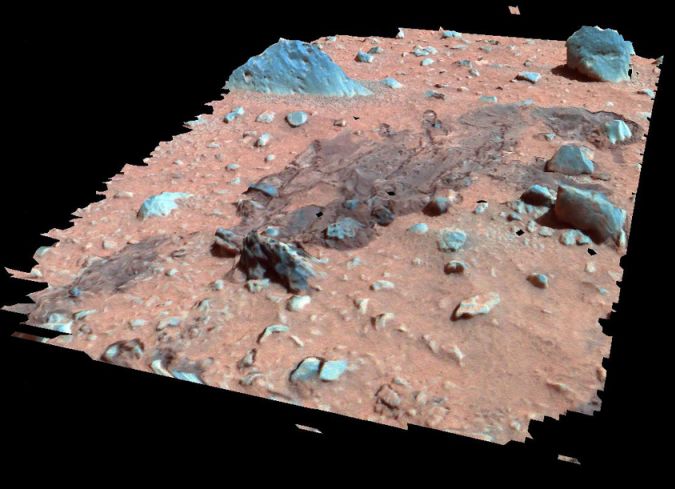
|
Explanation: Spirit moved across Mars yesterday as the rover successfully maneuvered down off its lander, driving its six wheels onto the floor of Gusev crater. As planned, the robotic geologist will now begin a close-up examination of the rocks and soil around the landing site for clues to the processes that formed them. A perspective projection of Spirit's local martian rocks and soil is shown above, based on 3D color image data recorded when rover was still perched on its landing platform. Dark-colored airbag drag marks stretch across the soil in this view of the surface. For scale, the triangular-faced rock in the upper left corner is about 20 centimeters (8 inches) high. Scientists anticipate that the rover's investigation will yield valuable evidence helping to confirm or refute the possibility that the floor of Gusev crater is an ancient lake bed.
|
January February March April May June July August September October November December |
| ||||||||||||||||||||||||||||||||||||||||||||||||
NASA Web Site Statements, Warnings, and Disclaimers
NASA Official: Jay Norris. Specific rights apply.
A service of: LHEA at NASA / GSFC
& Michigan Tech. U.
Based on Astronomy Picture
Of the Day
Publications with keywords: Mars - Spirit rover
Publications with words: Mars - Spirit rover
See also:
- APOD: 2025 September 28 Á Leopard Spots on Martian Rocks
- APOD: 2025 July 15 Á Collapse in Hebes Chasma on Mars
- APOD: 2025 July 6 Á The Spiral North Pole of Mars
- APOD: 2025 June 29 Á Dark Sand Cascades on Mars
- APOD: 2025 June 22 Á A Berry Bowl of Martian Spherules
- APOD: 2025 June 15 Á Two Worlds One Sun
- Perseverance Selfie with Ingenuity
